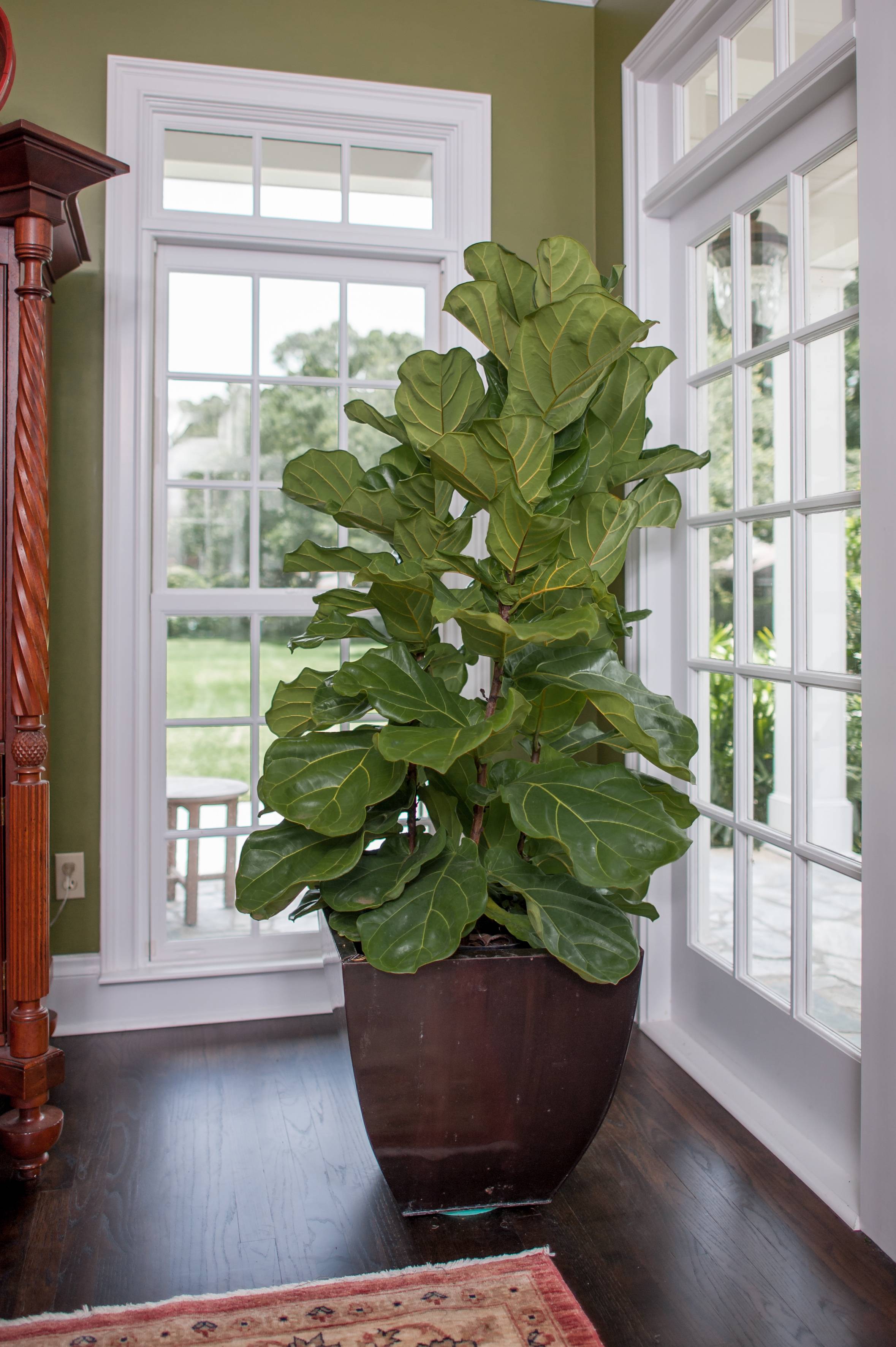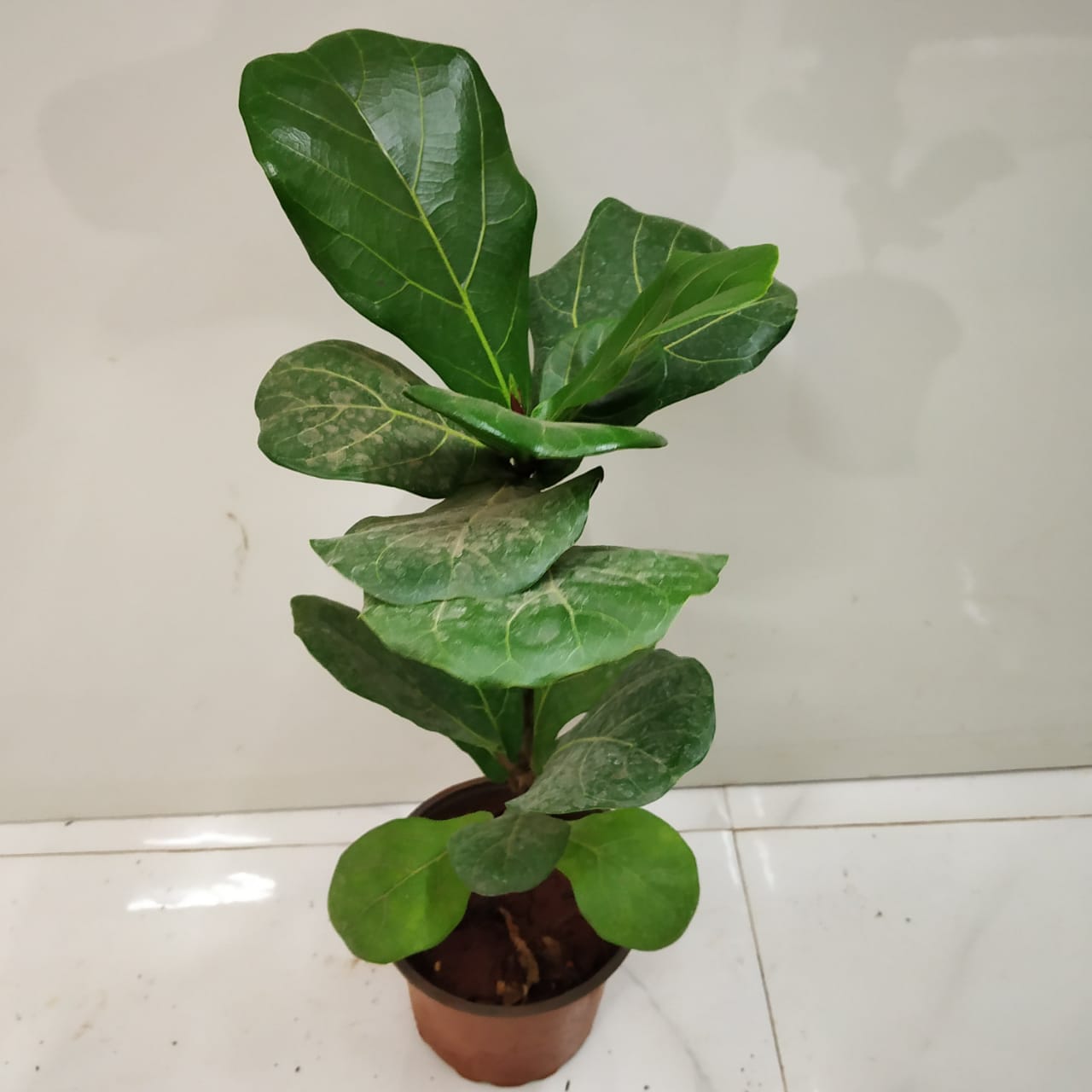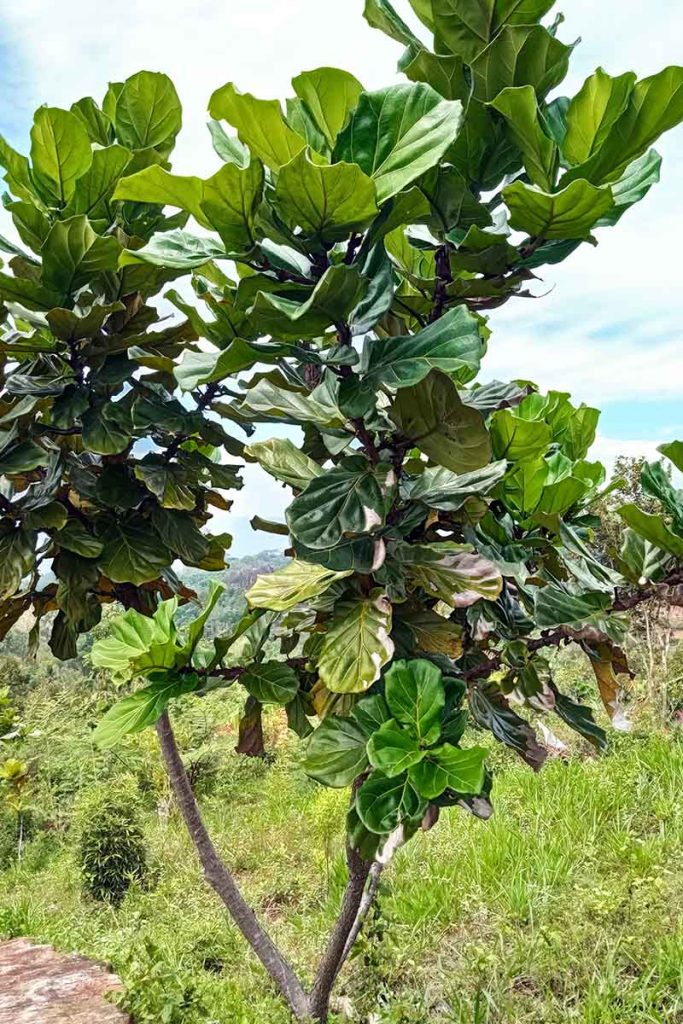

To address this, place the plant in a brighter spot and reduce the amount of watering to nurse it back to health.ĭry air or people brushing past the plant may cause brown tips on the leaf edges. This usually shows up as yellowing leaves or leaf drop. Overwatering is the most common problem with a fiddle leaf fig in cool or low-light conditions. Remove old or yellowing leaves close to the main stem or branch. Growers sometimes plant two or three young plants together and then plait the flexible stems as they grow, to form interesting trunk patterns. They can be trained as a standard by removing the lower leaves and shaping into a ball.

Tall or straggly plants can be pruned to encourage bushiness by removing the tip growth. A water-soluble liquid fertiliser should be applied every month during spring and summer. Fertilise after a month with a water-soluble fertiliser.Īpply a controlled-release fertiliser when potting up indoor plants. Remove the plant from its old pot, being careful not to damage the roots.ģ. Place the plant in the new container and fill the sides with soil.ĥ. Fill the new container with 4in of potting mix.

Select a slightly bigger pot or planter with good drainage, as the fiddle leaf fig is susceptible to root rot.Ģ.

Re-pot every two years to maintain health and vigour.ġ. Use a large, sturdy pot or container, as the plant can get quite large and heavy. Your fiddle leaf fig will require a premium standard potting mix when planted indoors. Allow the soil or potting mix to dry out between each watering to avoid leaf drop and root rot, as this plant is quite tolerant of drought and dry conditions. The soil pH should be in the range of around 6–7 for healthy development, which can be easily monitored with a pH kit. Most garden soils are suitable, but the fiddle leaf fig favours a moist, humus-rich but well-drained soil.
Figleaf plant windows#
Indoors, the fiddle leaf fig will grow in most temperate and tropical climates but requires a bright light or morning sun position, such as eastern-facing windows only, to avoid scorching of the foliage.
Figleaf plant full#
The fiddle leaf fig is best grown in partial shade outdoors in most tropical and warm-temperate climates, but it will take full sun when established. These are rarely seen on plants grown inside, except in warm glasshouses. They produce fruits on mature plants: long green figs that are usually hidden beneath the large coarse leaves. Undulate, fiddle-shaped glossy leaves up to 40cm long and 30cm wide form a bushy dome of foliage on top of an upright growing trunk or stem. The fiddle leaf fig is popular as an indoor potted plant and is often used in interior design and styling. It is used as a large specimen plant, growing between 2–3m tall or until it reaches ceiling height.įiddle leaf figs originate in the Central and West African tropical regions, growing naturally in lowland rainforest. Appearance and characteristics of a fiddle leaf figįiddle leaf figs are large spreading evergreen trees that can reach between 15 and 30m tall in tropical climates. Watering: allow the potting mix or soil to dry out between each watering. Position: full sun to partially shaded position outside, or bright indirect light indoors.įlowering and fruiting: long green figs are produced, but are usually hidden beneath the leaves.įeeding: use a controlled-release fertiliser in spring and a water-soluble fertiliser every month from spring to late summer. A moist, humus-rich but well-drained soil is preferred outdoors. Soil: a premium potting mix should always be used indoors. lyrata “Bambino”.įoliage: large green undulate, fiddle-shaped leaves with prominent veins.Ĭlimate: prefers a warm-temperate or tropical growing environment outdoors, but will grow in indoor environments. Dwarf forms are now available, such as F. Name: fiddle leaf fig, banjo fig, Ficus lyrata. What you need to know about a fiddle leaf fig


 0 kommentar(er)
0 kommentar(er)
